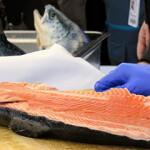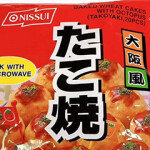Early signs show strong wild Alaska salmon market for 2019
A lot can change in a few months, fisheries economists are quick to say, but early indications point to very favorable conditions for wild Alaska salmon prices in 2019, especially for sockeye, the state’s top-dollar species.
Andy Wink, a fisheries economist who also heads the Bristol Bay Regional Seafood Development Association (BBRSDA), is happy with how the market is looking for the upcoming season.
“I think we’re at a pretty good place, and have been for the last few years in salmon markets. We’ve seen growing demand and the farmed salmon supply hasn’t grown as fast as it did in different points in the past,” Wink said. “It’s left producers in a good position.”
Leading farmed fish producers Norway and Chile, regulated by their respective governments, are bumping up against a threshold for the maximum number of salmon they can produce, and both are fighting blight. Norway, the world’s top farmed salmon producer, has had persistent problems with sea lice, while second-place producer Chile has been struggling with disease, primarily piscirickettsiosis, prompting environmental groups and health organizations to raise concerns over Chile’s overuse of antibiotics.
According to a recent report by environmental nonprofit Oceana, major retailers like Whole Foods and Costco are shying away from sourcing salmon from Chile. Target – which did not sell farmed fish at all for almost a decade – has shifted its policy so that it now sells farmed salmon, but only from operations certified by the Aquaculture Stewardship Council.
Meanwhile, farmed prices have dropped, but not so far that economists think they will drag down wild prices or undermine the wild market at supermarkets.
“Farmed salmon acts the baseline proxy, and other salmon kind of fit in around it,” Wink said. “As we’ve seen over the past couple decades, if farmed salmon prices fall hard, that can an effect on wild prices.”
According to Urner Barry, farmed salmon prices peaked in May 2018, and have since crept down to a three-year low, holding at USD 5.18 (EUR 4.58) per pound as of 14 February, still well above historical levels.
Garret Evridge, a fisheries economist for the McDowell Group, said it all adds to the possibility of bullish prices in 2019.
“The fundamentals seem to point to a strong price, especially if we harvest fewer fish in 2019,” Evridge said. “We were able to move a lot of product at a great price in 2018 and demand appears to be stable.”
Both Evridge and Wink point out that the market has sponged up massive runs of Bristol Bay sockeye over the past three years, with prices rising incrementally over the past three seasons. The domestic market has been strong, in part from an aggressive marketing campaign by BBRSDA that was in more than 1,000 stores last year, and China’s middle class slowly gaining an appreciation for salmon.
“We’re seeing a lot of consumption growth in China, particularly in sushi restaurants. And projections show the expectation of very high growth over the next several years, and all that has to come from somewhere, which just helps to keep prices elevated,” Wink said.
Wink added, however, that it would be helpful to see trade restrictions with China lifted, and pointed out that sockeye exports to China have decreased since the onset of the Trump administration’s trade war, but said the overall market is largely compensating, with just a three-percent drop in overall sockeye exports from 2017 to 2018, despite a seven-percent drop in Alaska sockeye harvest in the same period.
“The value of frozen sockeye being exported is up 18 percent overall, so if we’re down a little bit on volume, we’re up quite a bit on value, which is just another marker of strong demand,” Wink said.
Last season, according to numbers from the Alaska Department of Fish and Game, fishermen in Bristol Bay caught a record 220 million pounds of sockeye, which moved at USD 1.26 (EUR 1.11) per pound on average and netted around USD 276 million (EUR 244.1 million), nearly half of all Alaska salmon revenue in 2018. And here is a possible hitch for 2019. The Bristol Bay forecast is nearly half of last year’s catch and other runs have been down across the state. That could send prices even higher – or it could pull fish off shelves and out of hard-earned market share.
“Processors have to navigate the difficulty of being a reliable supplier of fish to the market even as harvests fluctuate significantly year-to-year. It does present the opportunity to introduce consumers to different species of salmon when supply is lower. For example, if there are fewer sockeye available, keta may become an attractive alternative. Of course, the goal is to preserve the availability of Alaska salmon for consumers – lost market share is tough to get back,” Evridge said.
If that happens, Evridge wonders whether or for how long consumers will remember wild Alaska salmon when it is not available where they buy fish. Last season, a small run on the heavily-marketed Copper River fish pushed prices through the roof, even prompting one Copper River chinook salmon to sell for USD 999 (EUR 883.35) at New York City’s Fulton Fish Market. It remains to be seen if other fish – Bristol Bay sockeye, for example – have enough name recognition to power through low supply.
And Evridge said that while wild salmon has found its footing for now, aquaculture is poised to exploit any prolonged supply holes.
“Farmed salmon production continues to increase, and we are seeing a growing amount of capital spent on land-based aquaculture located close to key markets such as the East Coast and California. Volume from these facilities is expected to increase over the next few years, and the Alaska salmon industry should be paying attention to this competing supply,” he said.






Share